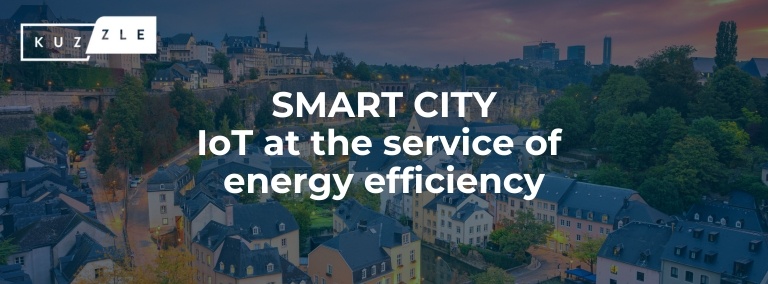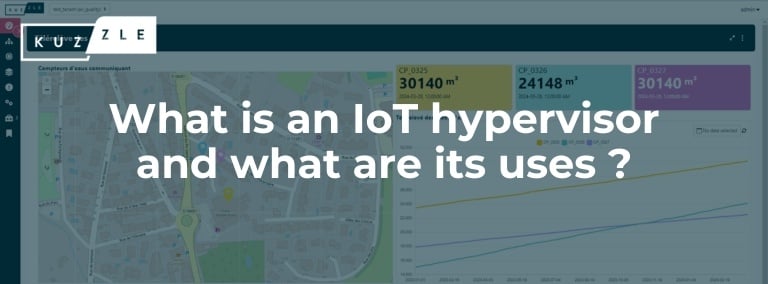The Internet of Things (IoT) is at the heart of technological innovation, transforming how we interact with the world around us. This digital revolution is based on a sophisticated IoT architecture, which forms the foundation for intelligent, connected applications.
What is an IoT architecture?
The IoT architecture, or Internet of Things architecture, is the organization of the various elements of your IoT project.
It defines the physical components used (connectors), their role, and the type of data collected. Architecture also refers to standards such as network configuration, security features, and the data formats used, from the collection of data from devices to the visualization of data on your IoT platform.
There are several IoT architectures to choose from, depending on the project and its technical and technological constraints. However, some common criteria need to be respected if you are to make the right choices.
.png?width=920&height=460&name=Visuel%20Blogpost%20LNS%20(2).png)
What layers make up an IoT architecture?
An IoT architecture is made up of several interconnected layers. Hardware, networks and connectivity, data management, and software solutions work in harmony to enable devices to operate seamlessly.
An IoT architecture consists of 4 essential layers:
- Hardware: This layer represents the physical foundation of the IoT architecture. It includes sensors, connected devices, and actuators. Sensors are responsible for collecting data, whether it's temperature, luminosity, pressure, or other parameters. IoT devices are generally equipped with microcontrollers, processors, and communication modules that enable them to capture, process, and transmit the information collected. Kuzzle IoT is agnostic to all sensor technologies to give you greater flexibility and free you from restrictive technological choices. So you can remotely manage all your connected equipment via a unified platform.
- Network and connectivity: This section manages communication between IoT devices and servers or other devices. It includes communication protocols, wired and wireless networks, and IoT gateways. IoT protocols, such as MQTT or CoAP, ensure reliable data transmission. Wireless networks, such as Wi-Fi, Bluetooth, 4G, or 5G, offer a variety of connectivity options. IoT gateways act as intermediaries between devices and servers, ensuring efficient communication. Kuzzle's IoT platform is interoperable with all network technologies to adapt to your connectivity needs.
- Data: The data layer is crucial for storing, processing, and managing the information collected by IoT sensors. Databases, whether local or in the cloud, are used to store the raw data. Data management systems are responsible for organizing, securing, and analyzing the data. IoT and data management platforms such as Kuzzle IoT will convert this raw data into heterogeneous data, enabling you to use your data in the form of dashboards, histograms, or real-time map views. Your data is an essential added value for your company.
- IoT platform: The IoT solution layer is the software part that encompasses the entire system. It offers functionalities such as device management, application creation, data visualization, automation, and security. IoT platforms, like Kuzzle IoT, allow you to manage the entire architecture, create dashboards to monitor data, define automation rules, and ensure the security of devices and data.
Intelligent integration of these layers in an IoT architecture is essential to ensure efficient data collection, seamless communication between devices, optimal management of your connected objects, and optimal use of data to make informed decisions. Our IoT platform, with its out-of-the-box functionality, provides an effective response to these needs, making it easier to deploy your IoT applications.
What are the criteria for choosing the right IoT architecture?
Choosing the right IoT architecture is a crucial decision to meet the specific needs of each business. Here are the criteria to consider to help you make informed decisions about your choice of IoT architecture:
- Scalability: Scalability is an essential criterion for an IoT architecture. The ability of the infrastructure to adapt to a growing number of connected devices is crucial to the scalability of your IoT projects. A scalable IoT architecture can effectively manage new sensors, connected objects, and users while fully guaranteeing its performance.
- Interoperability: Interoperability is the ability of devices and software to work together seamlessly, regardless of their manufacturer or communication protocol. An interoperable IoT architecture facilitates the integration of various devices and ensures that data can be shared and exploited consistently. Kuzzle IoT's Open Source DNA encourages interoperability through the integration of different IoT components.
- Scalability: Scalability is the flexibility of an architecture to evolve with the changing needs of the business. A scalable architecture can adapt to new functionality and future requirements without the need for a major overhaul. Our IoT platform provides a solid foundation for evolving over time, taking into account technological developments and the specific needs of each market, whether Smart City, Smart Logistics, Smart Industry, or Connected Health.
- Functionality: IoT architecture functionality plays a crucial role in operational efficiency. A complete solution offers device management tools, automation capabilities, dashboarding capabilities, alerting systems, and more. Kuzzle IoT, with its out-of-the-box functionality, enables the rapid development of feature-rich IoT applications to meet the specific needs of each sector.
- Availability: The IoT architecture must be available at all times to ensure the smooth running of critical applications. Downtime must be kept to a minimum. Our made-in-France IoT platform ensures essential high availability on Cloud or On-Premise mode.
- Maintainability: The ease with which the architecture can be managed and maintained is a key criterion. An architecture that is easy to manage reduces operational costs and minimizes downtime. Kuzzle IoT simplifies the management of your connected objects via an interface that brings together all your sensors, whatever their supplier or network technology.
In short, the choice of an appropriate IoT architecture is based on a relevant combination of these different criteria. Kuzzle IoT offers a set of functionalities that proactively respond to these needs while promoting innovation in the management of your connected objects.
Use case: a concrete example of an IoT architecture
Here's a use case for IoT in the Smart Logistics sector. A distribution company is using an advanced IoT architecture to optimize parcel tracking and delivery. Here's how it works:
1. Connected containers: Each container is equipped with sensors that collect a variety of data, including GPS location, temperature, humidity and shock. The container is also equipped with a cellular communication device that transmits this data in real time to the IoT platform.
2. IoT platform: This centralizes the data from all the connected containers in transit. It also manages IoT devices and enables automation rules to be configured. The IoT platform generates customized dashboards for logistics managers to track the location of parcels, monitor environmental conditions and ensure real-time tracking. By combining this data with container information, the IoT architecture can optimizeminimize delivery routes to minimise journey times and ensure the safety of parcels in transit.
3. Customer delivery: As the delivery vehicle approaches the final destination, the IoT platform sends notifications to customers to inform them of the estimated time of arrival - this is geofencing. Customers can also track the progress of their delivery in real-time via a real-time mobile application.
Thanks to this IoT architecture, the logistics provider can considerably improve the tracking of its goods and optimize delivery processes. Customers benefit from a transparent, real-time delivery experience, boosting customer satisfaction. The innovation brought about by this solution promotes smarter, more efficient logistics.
Contact one of our experts to build your IoT architecture together!






